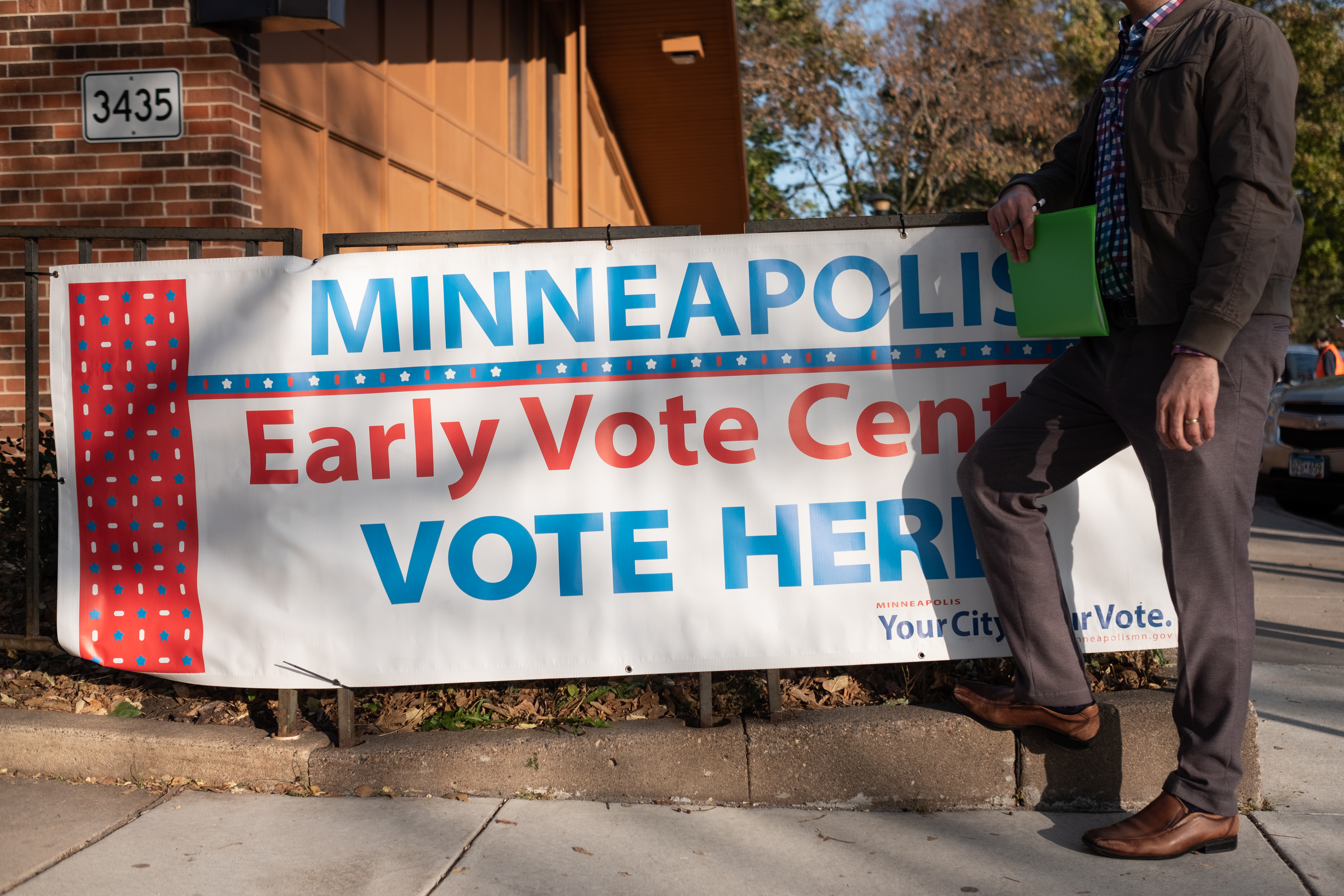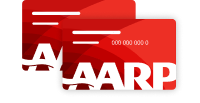How to Vote in Minnesota’s 2024 Elections
Important dates and election information
Key dates
- State primary: Tuesday, Aug. 13
- General election: Tuesday, Nov. 5
Voting at a glance
- Absentee voting: All registered voters can cast an absentee ballot, but you will need another registered voter or a notary as a witness.
- Mail ballot: If you are a registered voter and you live in a mail ballot precinct, a mail ballot will be automatically sent to your home. You do not have to complete an absentee ballot application.
- Early voting: You can cast an absentee ballot early and in person at your county election office for the presidential and state primaries.
- Voting at the polls: Polls will be open from 7 a.m. to 8 p.m. in most of the state for the presidential and state primaries. In state and federal elections, towns with populations below 500 are not required to open polling places until 10 a.m., but most choose to open by 7 a.m.
Voting in Minnesota
What to know about recent changes
Several changes to voting in Minnesota took effect recently. They include:
- Voters may now return absentee ballots in person up to 8 p.m. on Election Day. Previously, the deadline was 3 p.m.
- There are no restrictions on how many voters a person can assist at the polls.
- Employers must now allow employees to leave work without penalty to vote in person during the absentee voting period or on Election Day.
- Starting Saturday, June 1, registered voters can request to be added to a permanent absentee voter list, so they don’t have to reapply each year.
Redistricting in 2022 changed the boundaries of certain U.S. congressional and state legislative districts and may affect which candidates appear on your ballot. Check the secretary of state’s website for more information.
Voter registration
The deadline to register in advance to vote is Tuesday, July 23, for the state primary. You can register by mail, online or in person.
- Online: Use the secretary of state’s voter information portal to register, update your voter information and check your registration status. You will need an email address and a Minnesota state ID, Minnesota driver’s license or the last four digits of your Social Security number.
- By mail: Download and print an application. Mail your completed application to either your county election office or to: Secretary of State, First National Bank Building, 332 Minnesota St., Suite N201, Saint Paul, MN 55101.
- In person: Register in person when you vote early or at your polling place on Election Day. You’ll need an approved form of ID with your name and current address, such as a Minnesota driver’s license, learner’s permit, state-issued ID or a receipt for any of these; or tribal ID with name, address, photo and signature. If you don’t have one, you’ll need a photo ID, along with a bill, lease or other document that confirms your name and current address. Find ID requirements on the secretary of state’s election website.
Registering to vote on Election Day
You can register to vote at your polling place on Election Day. You will need to bring a document that proves your Minnesota residence, such as a valid Minnesota driver’s license, or a photo ID with a document that confirms your name and current address, such as a utility bill. A list of acceptable documents is on the secretary of state’s election website.

Primary voting and party affiliation
Minnesota does not have political party registration. Voters can participate in either primary but can only vote in one.
Ways to vote
Requesting an absentee ballot
Registered voters can request a ballot any time except on Election Day. Officials recommend that you submit a request with enough time for them to mail you a ballot before an election.
Starting Saturday, June 1, you can apply to be on a permanent absentee voter list and automatically receive a ballot before every election.
Request a ballot by mail, in person or online:
- By mail: Print this application from the state elections website for the presidential primary and this application for the state primary. Mail your completed application to your county election office. Include your Minnesota driver’s license or state ID card number, or the last four digits of your Social Security number.
- In person: Request an absentee ballot at your county election office. You also can complete and return your ballot at the office.
- Online: Use the state’s absentee ballot request portal to apply for your ballot.
Returning your absentee ballot
Once you receive your absentee ballot, you will need to show your witness your blank ballot. Then complete the ballot in private, place it in the tan ballot envelope and seal it. Place the tan ballot envelope in the white signature envelope. Fill out the white signature envelope completely and read and sign the oath on it. Ask your witness to print their name and Minnesota street address on the white signature envelope. The witness then must sign the envelope. The witness can be a notary or another Minnesota registered voter. Seal the envelope and place it in the larger white return envelope. Return your ballot by mail or in person.
- By mail: Place your completed ballot in the prepaid, pre-addressed envelope and mail it to your county election office. Your ballot must be received by 8 p.m. on Election Day for the presidential and state primaries.
- In person: Drop off your completed ballot at your county election office by 8 p.m. on Election Day. You also can return your own plus up to three other people’s ballots.
- Drop box: Completed ballots must be returned by 8 p.m. on Election Day to a drop box. Some local election offices use drop boxes. Check the secretary of state’s website for drop box locations.
Voters can designate an agent to pick up and return their absentee ballot application and completed ballot if they have a disability, are hospitalized or live in a nursing home or assisted living facility. This is called “agent delivery.” Qualified voters must fill out an additional form to be delivered to their county election office along with their absentee ballot application. The agent or someone else you designate must return your completed ballot to the same county election office by 8 p.m. on Election Day for the presidential and state primaries or you can return it by mail.
Check the status of your absentee ballot using the secretary of state’s voter information portal.
Returning a mail ballot
Voters who live in mail precincts, which are cities with fewer than 400 registered voters or townships of any size that choose to vote by mail, will be mailed a ballot and can return it by mail or in person to their county election office.
Mail ballots do not need to have a witness signature and must be returned by 8 p.m. on Election Day for the presidential and state primaries.
Voting in person before Election Day
Early voting for the state primary will be held from Friday, June 28, through Monday, Aug. 12.
You can vote early by casting an absentee ballot in person at your local election office or, in some cases, at your city clerk’s office. Check this list of voting locations before election day or contact your county election office for places and times.
Voters who live in mail precincts also can vote early and in person by casting an absentee ballot or their mail ballot at their county election office.
Voting at the polls on Election Day
Polls are generally open from 7 a.m. to 8 p.m. In state and federal elections, towns with populations below 500 are not required to open polling places until 10 a.m., but most choose to open by 7 a.m. You will be allowed to vote if you are in line before the polls close. Use the secretary of state’s voter information portal to find your polling location and hours.
Voters who live in mail precincts can vote in person on Election Day, usually at their county election office. Contact your county election office to confirm the location of your mail ballot precinct polling place, which will be open from 7 a.m. to 8 p.m.
Voter ID requirements on Election Day
If your voter registration is current and active, you do not need to bring ID. If you need to register or update your registration, or if you have not voted in more than four years, you will need to show proof of residence, such as a valid Minnesota driver’s license, or a photo ID plus a document with your current name and address, such as a utility bill. A list of acceptable identification documents is on the secretary of state’s website.
Voting with a disability
You can bring someone with you to the polls to help you as long as the person is not from your employer or union.
Curbside voting is available upon request. Two election judges from different political parties will bring you a ballot and return it inside when you are finished voting. You also can register to vote or update your registration in the same way. For more information, contact your county election office.
Any voter can use a ballot marking machine, available at most polling places. Its screen shows the ballot in large print or with a high-contrast background and can provide audio through headphones. You can fill out the ballot with a Braille keypad, touchscreen or other assistive technology. The device prints your completed ballot. You can then place your ballot into the ballot box.
Voters who have difficulty reading or writing, are visually impaired or have a physical disability that interferes with the voting process can apply for an accessible absentee ballot. Complete and submit an absentee ballot application, then contact your county election office and say you want to receive an accessible ballot.
More information about candidates
Key races:
- U.S. President
- U.S. House: eight seats
- U.S. Senate: one seat
- State House: 134 seats
Sample ballots will be available at the secretary of state’s website.
Editor’s note: This guide was originally published Jan. 24, 2024, and has been updated with new information about voting in the 2024 elections.
Maura Kelly Lannan is a writer, editor and producer for AARP who covers federal and state policy. She has worked as a reporter for the Associated Press, the Chicago Tribune and the Waterbury, Connecticut, Republican-American. She also has written for Bloomberg Government, The Boston Globe and other publications.


